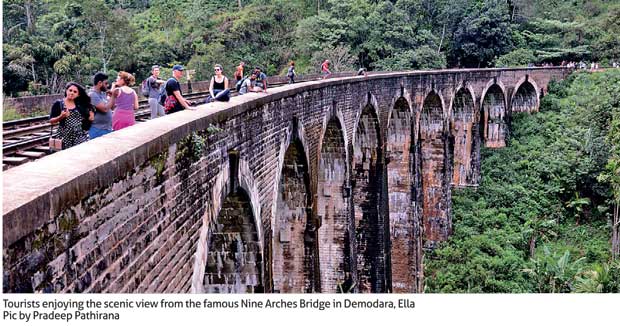Reply To:
Name - Reply Comment

By Chandeepa Wettasinghe
The Institute of Policy Studies (IPS), an autonomous government affiliated think tank recently called on greater attention to be placed on research into the country’s burgeoning tourism sector in order to maximize the benefits and minimize the harm from tourism. During a recent Twitter chat on the State of the Economy 2017, IPS Research Assistant Yolanthika Ellepola said that “Insufficient and unreliable tourism-related data and an absence of tourism-related research,” were among the main issues in the industry.
Recently, the Sri Lanka Tourism Development Authority, which is currently tasked with conducting research in tourism, came under heavy fire for improperly sampling departure surveys, which are currently used to measure the country’s tourism earnings.
Thirty seven tourism operators, who account for almost all of the star-class hotels in Sri Lanka and some of the largest travel agencies, in an overwhelming majority said that they had no confidence in the research conducted by the SLTDA.
SLTDA Director General Malraj Kiriella provided the defence that the SLTDA weighs its results in accordance with the total tourist population figures released by the Immigration and Emigration Department, and that the number of tourism operators who criticized SLTDA amounted to only a few.
He had also said that Tourism Satellite Account to be set up by the end of 2018 would enable more comprehensive data on tourism’s contribution to the national economy to be determined.
Kiriella, who earlier this year pledged to uphold the proactive disclosure of information under the Right to Information Act—including frequent publishing of data obtained by each state institution—has failed to stick to his promise of quarterly publishing numerous supply-side data which he said takes some time to collect and process.
Only the monthly arrival data obtained from the Immigration and Emigration Department is currently published, as usual.
The government’s own Tourism Strategic Plan 2017-2020 (TSP) which was released this August confirmed that most of the reporting done by Mirror Business over the last two years on the lack of research and the limits it places on developing the tourism industry.
While the government is being criticized for poor research, private sector businesses too are lagging behind in analyzing data they have collected through their clients, since at the recent Cinnamon Future of Tourism Summit, the country’s largest leisure and tourism operator, Cinnamon, admitted that it is only now starting data analytics.
Meanwhile, IPS Research Economist Kanchana Wickramasinghe said that lack of data is also a problem in measuring sustainability aspects of tourism in Sri Lanka, such as carrying capacity and the limits of acceptable change.
“These are essential parameters for planning sustainable tourism. Sri Lanka needs more improvements in this area. There are signs of negative repercussions that also need to be studied further,” she said.
Kiriella recently confirmed that foreign expertise will be provided to Sri Lanka to perform a carrying capacity study this year.
Meanwhile, Ellepola called for the establishment of a research unit for tourism, strengthen the tourism information management system and to publish research regularly for effective marketing campaigns.
She also said that transparent and effective communication is required among the coordinating agencies, central and district governments and the private sector to enhance Sri Lanka’s tourism industry.
The Sri Lanka Tourism Promotion Bureau over the years has continuously evaded calls to furnish statistics on its marketing efforts, which the TSP this year said had low returns on investment. The TSP has provided an adequate framework for the future based on research, analytics and proper marketing to harness niche tourism opportunities in the country and increase tourism revenue, although tourism personalities had said that execution has always been the weak spot of the government.
Although Sri Lanka’s annual tourism arrivals have grown from half a million tourists to just over two million since 2009, the growth has continuously declined, and is now a trickle, with a year-on-year growth of 2.5 percent for the first 11 months of 2017.